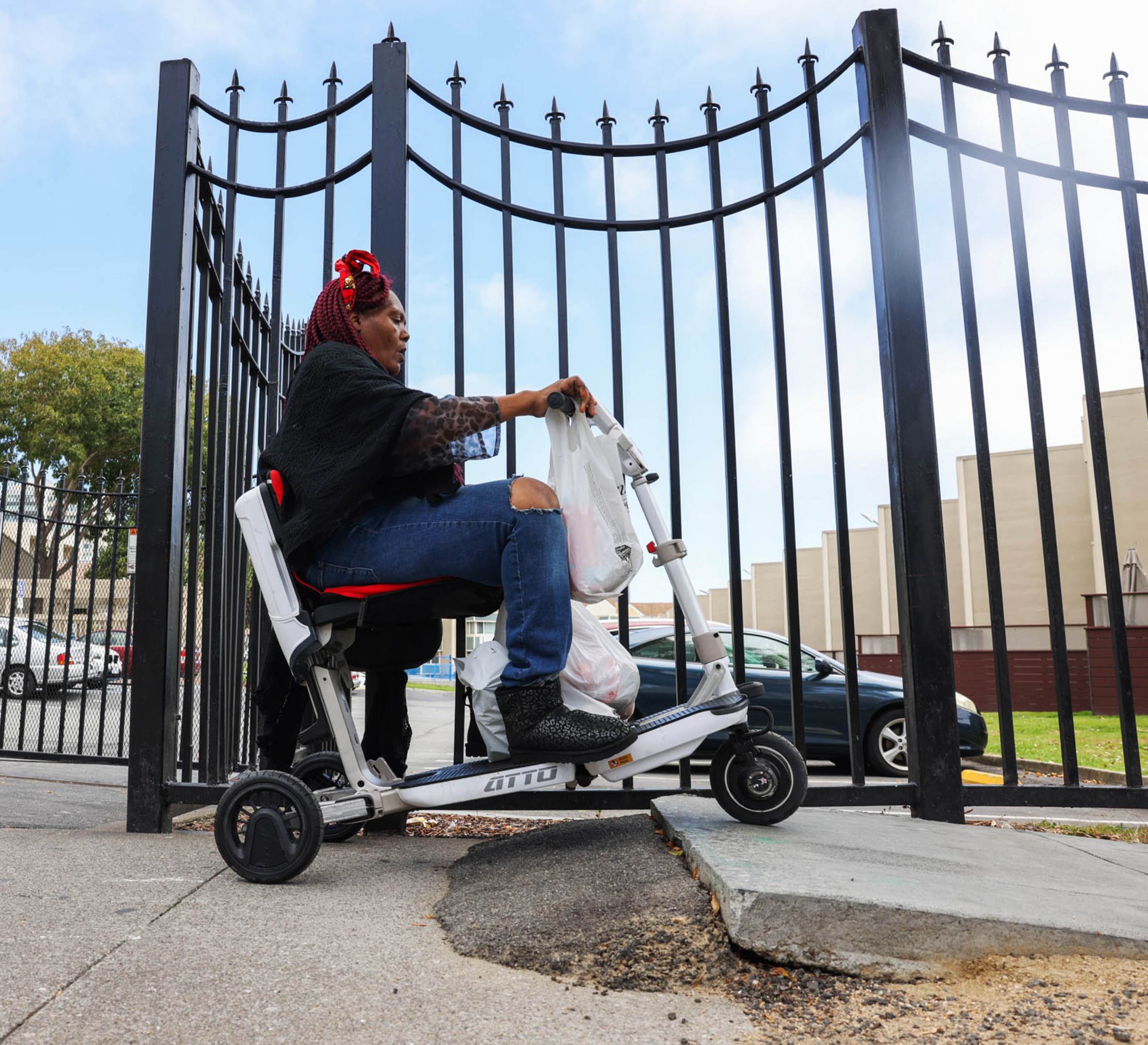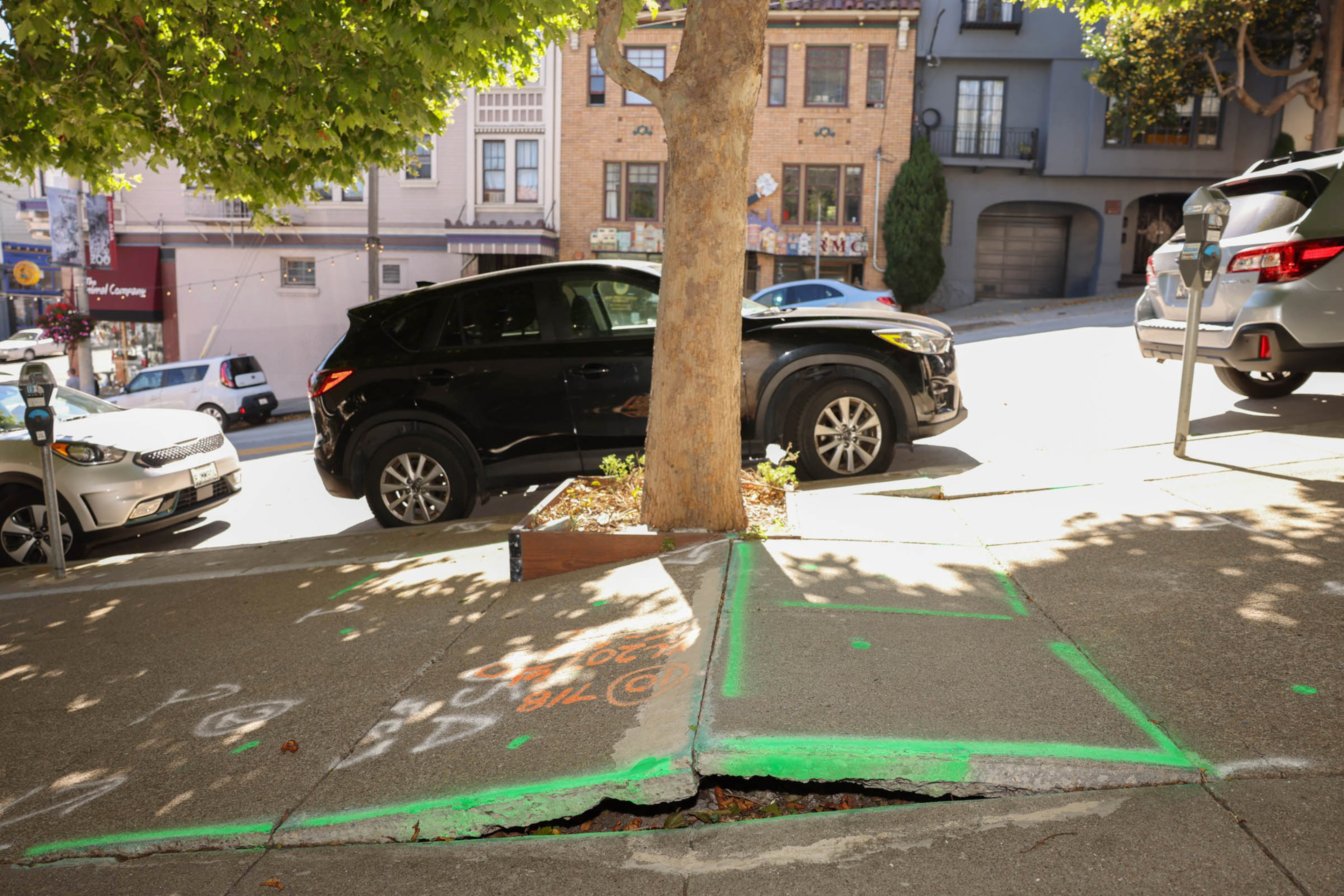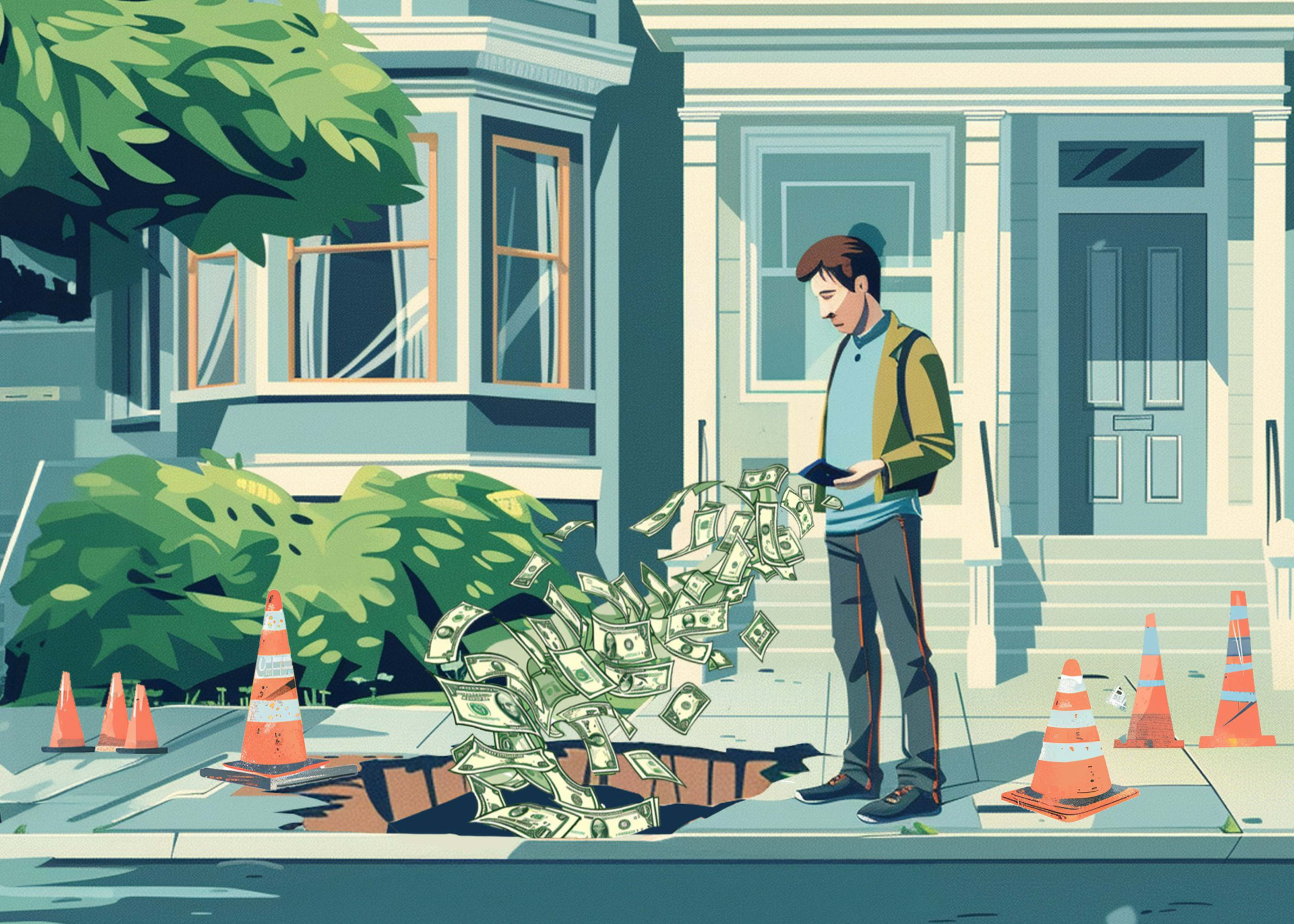You don’t own the sidewalk in front of your house. But if the city comes to fix it, you do own the bill–and may pay a premium for the repair.
San Francisco charged over 2,570 local property owners nearly $2.7 million for repairs on public sidewalks over the past five years, according to Public Works data obtained by The Standard.
If the sidewalk in front of a San Francisco home or business is in rough shape, the city will fix it, and then send the adjacent property owner the bill. That’s because in San Francisco, and most of California, property owners don’t own the sidewalk, but they’re still on the hook for its maintenance, whether they like it or not.
To understand just how much local property owners have reimbursed the city for repairs to San Francisco sidewalks, The Standard obtained Public Works data documenting every sidewalk repair invoice the city issued from 2019 to 2023.
The 2,570 invoices in the data are just the tip of the iceberg; San Francisco issued over 14,000 notices that property owners needed to repair nearby sidewalks during that time. That means that over 80% of people opted to hire a private company to do the work, instead of letting the city organize the fix, so Public Works never logged the cost of their repair.
Some of the bills climbed into the tens of thousands of dollars. That included the $64,000 invoice the city sent to Safeway after rehabbing the walkways outside its Outer Richmond store. Fixing the walkway adjacent to a Mission-neighborhood nonprofit ran up a nearly $32,000 tab.

The bills for single-family homes didn’t climb quite that high—the median invoice totalled $625—but still sometimes saddled residents with surprise multi-thousand-dollar charges.
“I was upset about it,” said Richmond resident Terri Shearer, who the city charged $3,000 for a contractor to fix the sidewalk in front of her property, according to the data. “It’s not my property, it’s city property, the sidewalk, but yet… they are pushing those repair costs off on the homeowner.”
Shearer is far from the first San Franciscan to balk at involuntary sidewalk fees. It’s an issue that has plagued California cities since the modern day concept of the sidewalk emerged, and was promptly made the responsibility of adjacent property owners by an early-20th-century state law (opens in new tab). Major cities across the state, and the country, have long placed sidewalk responsibility onto individual residents, including San Jose, San Diego and Oakland.
Cities that have taken on the responsibility themselves have sometimes floundered, faced with the vast cost of maintaining ever-deteriorating walkways. In Sacramento (opens in new tab), a 1973 initiative to return sidewalk responsibility to the city lasted only three years, when officials opted to return the burden to property owners in the face of widespread repair requests. A long-running Los Angeles attempt to maintain city sidewalks ended in persistent poor conditions, leading the city to recently move toward releasing its responsibility (opens in new tab).
But there are success stories of cities maintaining their own sidewalks. Washington D.C does it, and so does Ann Arbor, Michigan (opens in new tab). Chicago splits the price (opens in new tab) with property owners. Oftentimes those cities fund the repairs by charging residents an assessment fee that specifically sets aside money for sidewalk upkeep.
Widespread or not, that doesn’t mean individual San Francisco property owners are thrilled when the sidewalk bill arrives. The city invoiced Nick Espiritu nearly $3,000 for the sidewalk repair its contractor completed in front of his home. His nextdoor neighbor opted to instead hire a private company to resolve the mandated repair and after comparing prices, Espiritu learned that going private could have come with a big discount, he said.

Roberto Valdez, owner of Big Blue Construction, one of the private companies (opens in new tab) that fix San Francisco sidewalks, said he’s able to offer prices far lower than the city bid since he’s not constrained by the same bureaucratic rules.
“The city, they’re going to charge a lot,” Valdez said.
Public Works spokesperson Rachel Gordon said that the department is simply following state (opens in new tab) and local (opens in new tab) laws when it charges residents for sidewalk repairs. Plus, with funding as it is, Public Works wouldn’t be able to keep up with sidewalk maintenance on its own.
“It’s a resource issue, bottom line,” Gordon said. “We don’t have the resources to take care of this, and it is, and it has been, the responsibility of the adjacent property owners.”
The one exception comes in the form of sidewalk damage caused by city street trees, which San Francisco has footed the cost of ever since a 2016 ballot measure made it so, and set aside a pot of city money to fund the program.
Local sidewalk repair regulations are part of the network of rules that we all want to be in place to keep the community safe, according to Public Works Director Carla Short.
“But then we sometimes don’t want to pay for it when we’re on the hook,” Short said. “So I think we just have to remember, broadly speaking, that it takes all of us to contribute to help keep San Francisco safe.”
Those safety fixes, however, sometimes don’t come quickly enough, according to longtime resident Richard Matzinger. He regularly spots broken up sidewalks in his neighborhood marked by paint indicating where repairs are needed. The sidewalk fixes sometimes take so long that the paint fades before the work crews arrive, if they ever do, Matzinger said.

“If it’s a dangerous spot, then somebody has got to be responsible for it and somebody should fix it,” Matzinger said. “Pedestrians are all at risk until they do.”
It takes the city an average of 477 days from the date a sidewalk issue is inspected to when repair work is completed, according to the Public Works data.
In the meantime, damaged sidewalks can cause treacherous conditions for locals living with disabilities and trip up pedestrians. Just this week, city leaders considered paying out $300,000 and $150,000 settlements to people who said they were injured after falls caused by sidewalks in poor condition.
To avoid letting broken sidewalks languish, San Francisco has two complementary systems (opens in new tab). One program aims to inspect every inch of city sidewalk once every 25 years. The other is driven by complaints, which residents and businesses can file through 311.
Homeowner Espiritu said that before the city came through his block, conditions were rough, with the sidewalks buckling.
“On balance, I’m not mad,” Espiritu said of his experience with the sidewalk repair program. “The sidewalks are fixed, it’s better for the neighborhood.”
